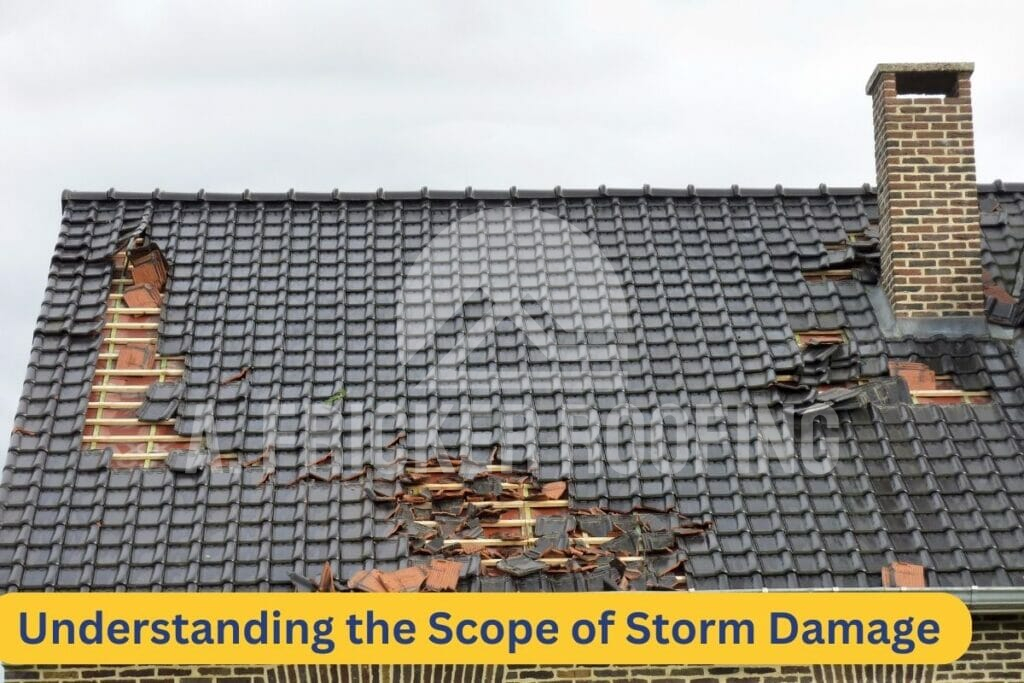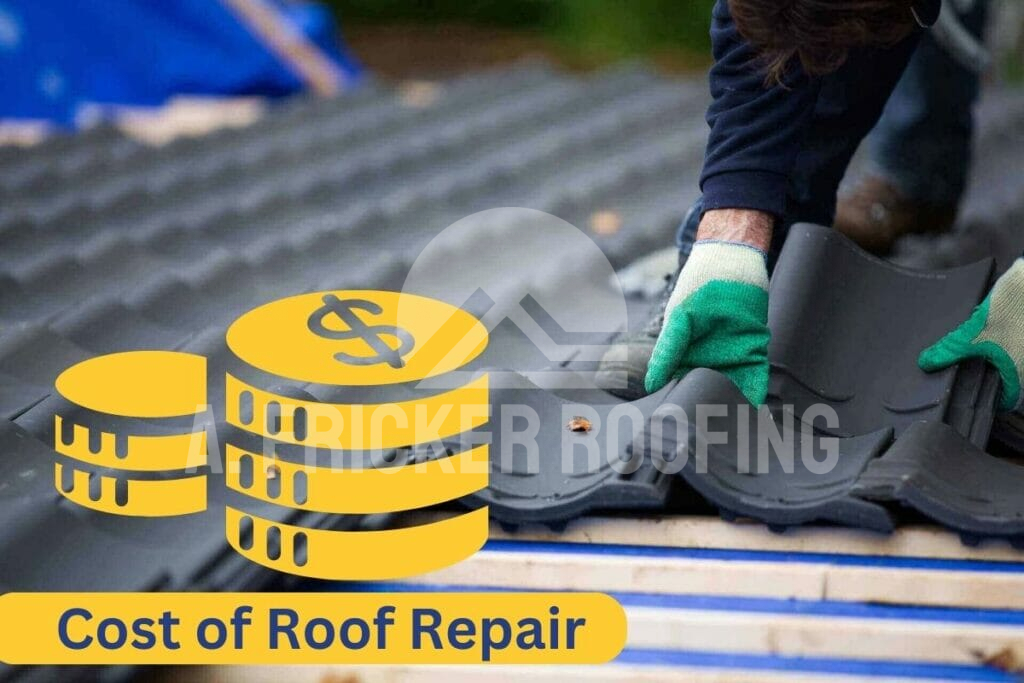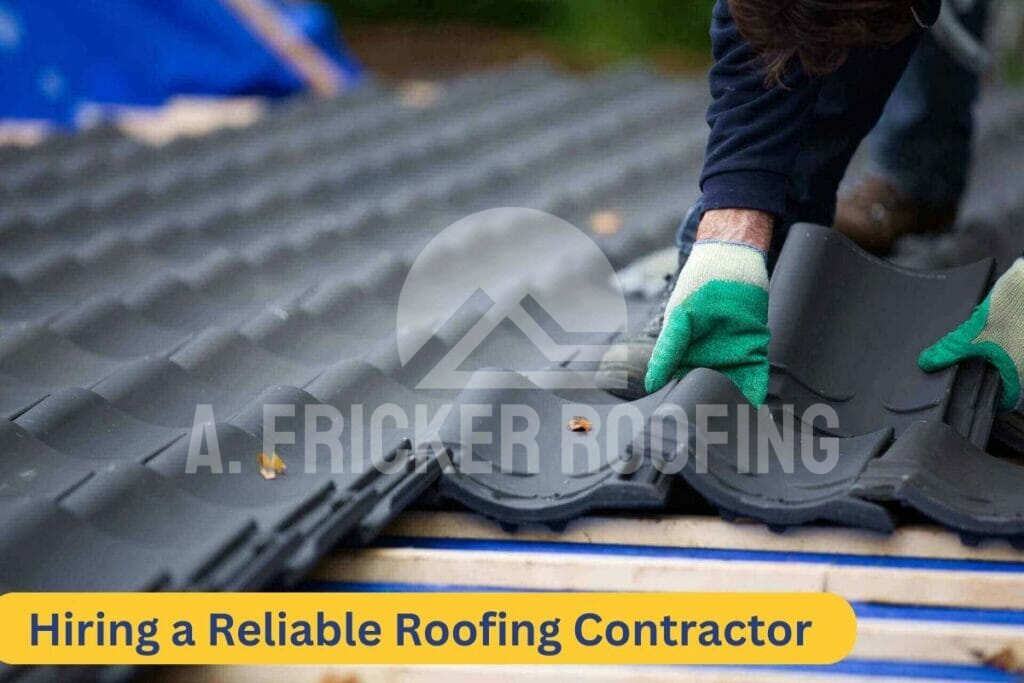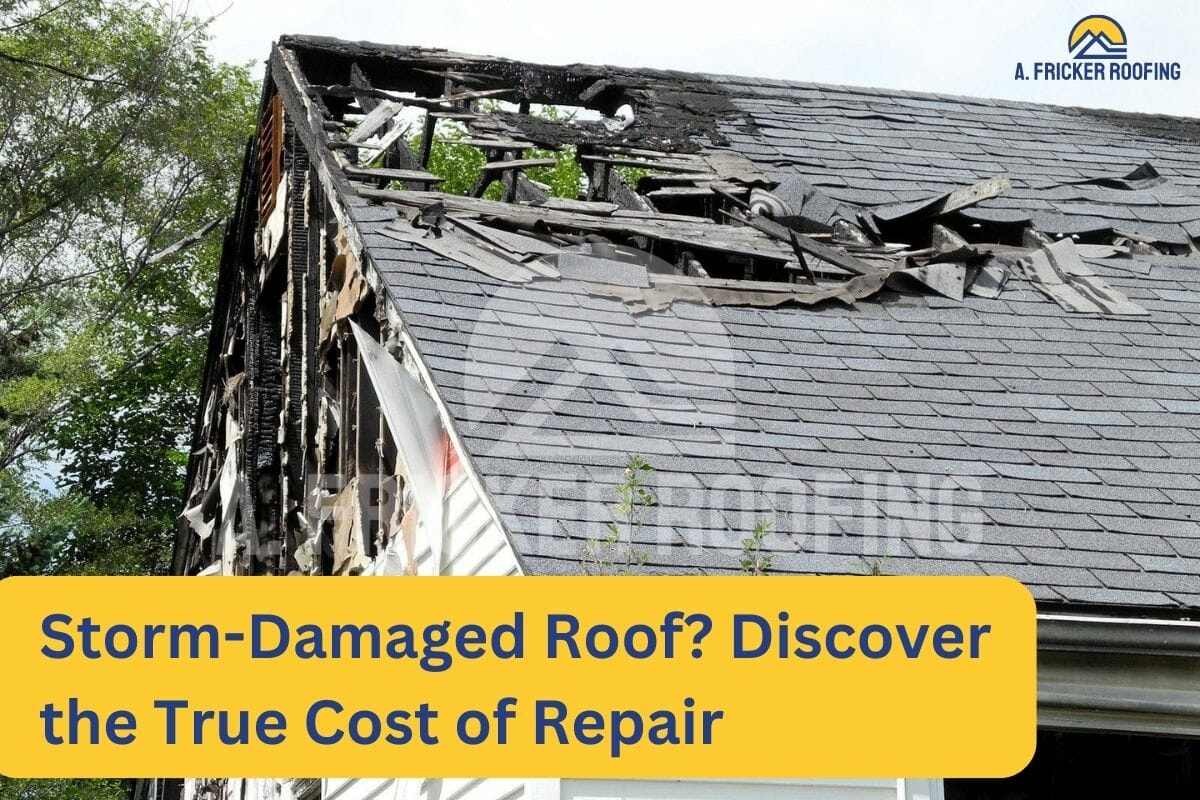When a storm strikes, your home can become a casualty of Mother Nature’s fury, leaving you with the daunting task of repairing the resulting damage. The national average cost to restore a home after extreme weather is $11,360, with repair bills ranging from as low as $2,622 to a staggering $20,399.
Don’t fret, though! Just as you bravely faced the storm itself, you can navigate the path to recovery. In this blog post, we’ll uncover the actual cost of repairing storm-damaged roofs and share practical tips to save money during the repair process.
#1 Understanding the Scope of Storm Damage

When a storm hits, it can be difficult to assess the full extent of the damage to your roof. However, it is important to do so as soon as possible to get your repairs started and prevent further damage. Here are some things to look for when trying to understand the scope of storm damage to your roof:
- Missing or damaged shingles – This is one of the most common signs of roof damage. If you see any missing or cracked shingles, it is likely that your roof has been compromised and needs repairs.
- Water leaks – If you have any leaks in your attic or inside your home, it is a sign that your roof is not properly sealed and allowing water to seep in.
- Damaged flashing – Flashing is the metal trim that helps to seal your roof around vents, chimneys, and other openings. If your flashing is damaged, water can leak into your home.
- Sagging or warped roof – If your roof is sagging or warped, it is a sign that the structural integrity of your roof has been compromised and needs repairs.
The cost of roof repairs will vary depending on the extent of the damage. However, it is important to get your repairs started as soon as possible to prevent further damage and protect your home from the elements.
#2 Assessing the True Cost of Roof Repair

Repairing a storm-damaged roof involves several factors that contribute to the overall cost. It is essential to evaluate these aspects to determine an accurate estimate for your specific situation.
#2.1 Factors Affecting Repair Costs
- The Severity of Damage: The extent and severity of the roof damage will significantly impact the repair costs. Minor repairs, such as fixing a few shingles, will be less expensive compared to major structural repairs.
- Roofing Material: Different roofing materials have varying costs, and the choice of material for your repairs will affect the overall expenses. Asphalt shingles are generally more affordable, while metal or slate roofing can be more expensive.
- Roof Size and Complexity: The size of your roof and its complexity, including its shape and slope, will influence the cost of repairs. Larger roofs, or those with intricate designs may require more time and labor, thus increasing the overall expenses.
- Labor Costs: The cost of hiring professional contractors to repair your roof will depend on their experience, location, and the complexity of the job. Labor costs can vary, so it’s essential to research and compare quotes from different contractors.
By considering the severity of the damage, the roofing material, the size and complexity of the roof, and labor costs, homeowners can better understand the true cost of repairing a storm-damaged roof. This knowledge allows them to make informed decisions, obtain accurate estimates, and effectively plan for the necessary repairs.
#2.2 Here’s an overview of the average cost range for each factor affecting storm and wind damage estimates:
The Severity of Damage:
- Minor repairs: $200 to $500
- Major structural repairs: $1,000 to $10,000 or more, depending on the extent of damage
Roofing Material:
- Asphalt shingles: $1 to $5 per square foot
- Metal roofing: $5 to $12 per square foot
- Slate roofing: $15 to $30 per square foot
Roof Size and Complexity:
- Larger roofs: $5,000 to $20,000 or more, depending on size and complexity
- Intricate designs and slopes: An additional 10% to 25% on top of the base repair cost
Labor Costs:
- Professional contractor fees: $50 to $150 per hour, depending on experience and location
- Complex jobs may require several days of work, contributing to labor costs
Keep in mind that these cost ranges are approximate and can vary based on several factors, such as location, specific repairs needed, and individual contractor rates. It’s important to obtain multiple quotes and conduct thorough research to estimate your situation accurately.
#3 Repair Options and Cost-Saving Strategies

When faced with a storm-damaged roof, there are several repair options and cost-saving strategies you can consider. Let’s explore some of them:
- DIY vs. Hiring a Professional – If you have the necessary skills for minor repairs, you may opt to tackle the repairs yourself. However, it’s important to note that roofing work can be dangerous and requires expertise. Hiring a professional ensures the job is done correctly and reduces the risk of accidents.
- Insurance Coverage and Claims – Review your homeowner’s insurance policy to determine if storm damage is covered. If it is, file a claim as soon as possible. Insurance coverage can significantly reduce the out-of-pocket expenses associated with roof repairs.
- Roofing Material Selection – Consider the long-term benefits and costs when replacing damaged roofing materials. Opting for durable and energy-efficient materials may be more expensive initially, but they can provide savings in the form of lower energy bills and reduced maintenance needs over time.
- Financing Options – If the cost of repairs is a concern, ask your contractor about financing options available to homeowners. Some roofing contractors offer payment plans or work with financing companies to help you manage the expenses.
#4 Hiring a Reliable Roofing Contractor

Choosing a reputable roofing contractor is crucial to ensure quality repairs and avoid potential scams. Here are some tips for hiring a reliable professional:
- Research and Gather Quotes: Obtain multiple quotes from different contractors. Research their reputation, experience, and customer reviews to make an informed decision.
- Check Credentials and Reviews: Verify that the contractor is licensed, insured, and certified. Read online reviews and testimonials to gauge their reliability and customer satisfaction.
- Ask for a Detailed Contract: Before work begins, request a detailed contract that outlines the scope of work, materials to be used, timelines, and payment terms. This will provide clarity and protect both parties.
#5 Preventive Measures to Minimize Future Storm Damage

Taking proactive measures to protect your roof from future storms can save you significant expenses in the long run. Consider the following preventive actions:
- Regular Inspections and Maintenance: Schedule regular roof inspections to identify any potential issues before they worsen. Prompt maintenance and repairs can prevent storm damage from escalating.
- Trim Trees and Overhanging Branches: Trim trees near your property to minimize the risk of falling branches during storms. Overhanging branches can cause severe damage to your roof if not properly maintained.
- Reinforce Roofing Structures: Reinforce vulnerable areas of your roof, such as flashing, seals, and gutters, to enhance their resistance to storm damage. Consult with a professional to identify weak points and reinforce them accordingly.
Want to learn more about storm damage and how to protect your home? Check out our blog post on “Essential Storm Damage Roof Inspection Checklist And Cost Analysis”
Conclusion
A storm-damaged roof can have a significant impact on your home and finances. Understanding the true cost of repair and implementing cost-saving strategies can help you navigate the process more effectively. At A. Fricker Roofing and Waterproofing, we specialize in storm-damage roof repairs and are here to assist you. You can trust our reliable roofing contractors to provide expert services and high-quality repairs. We understand the urgency of the situation, so don’t hesitate to contact us at (918) 402-7167 for immediate assistance.

